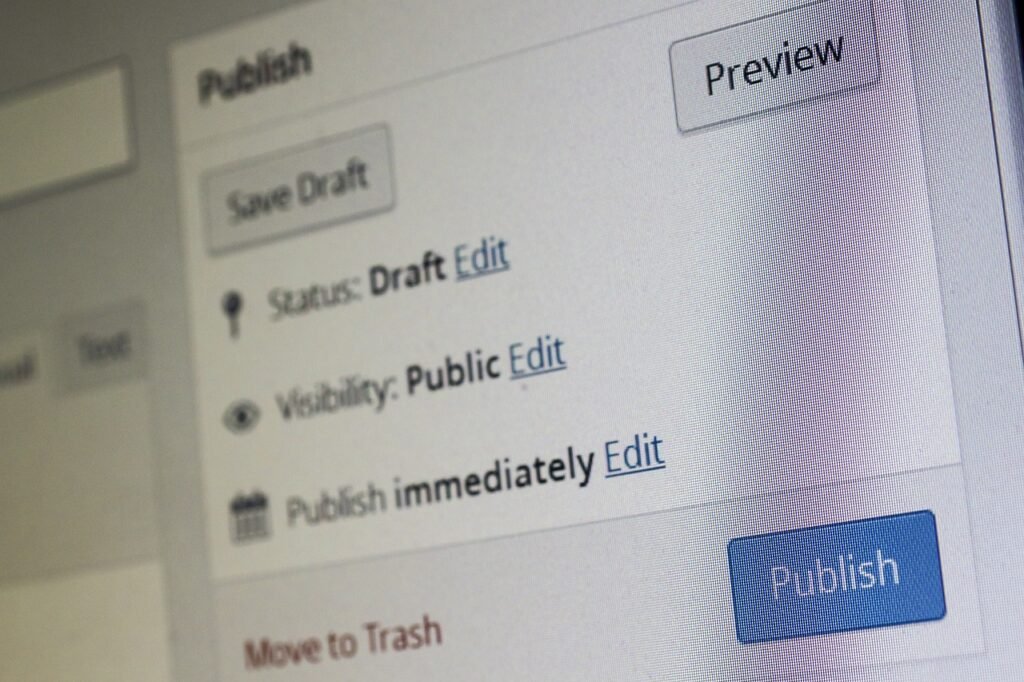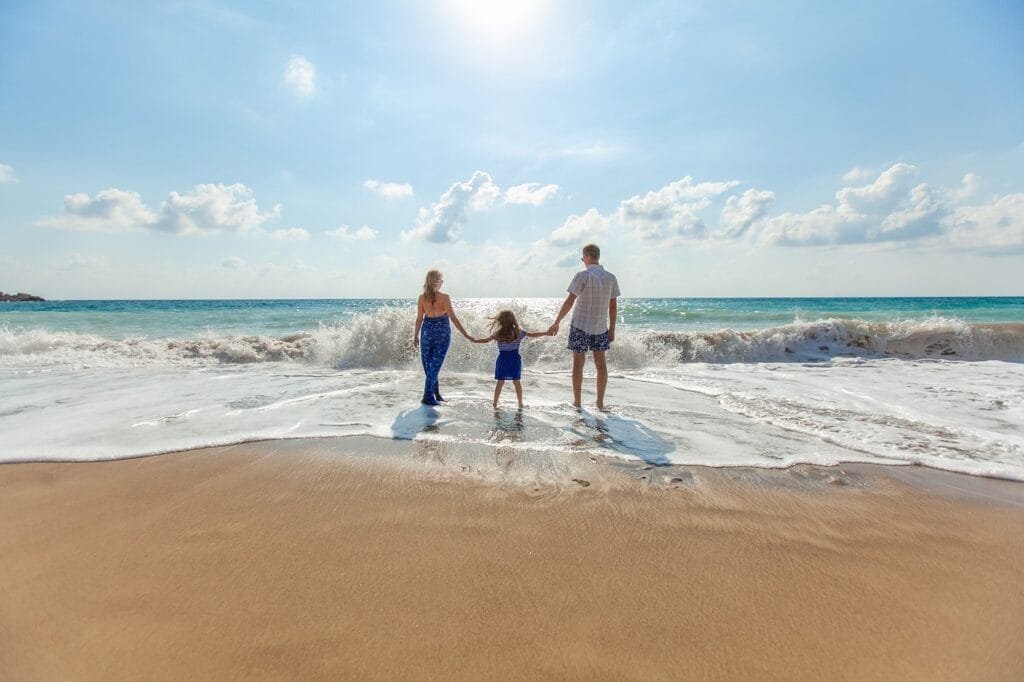This Article has been revised, edited and added to, by Poulomi Chakraborty.
- The Immediate Aftermath: Search Behavior Changes
- Adapting Content Strategy: Relevance and Responsiveness
- Local SEO: A Critical Consideration
- Utilizing Social Media for Crisis Communication
- Long-Term Implications: Beyond the Immediate Crisis
- Analytics and Metrics: Gauging the Impact
- Pivoting the Business Model: An Agile Approach
- Concluding Thoughts: The Transformative Power of Nature and SEO
When you think about SEO for the travel industry, topics like keyword optimization, user experience, and backlinking usually come to mind. However, the effect of natural disasters on travel SEO is a subject often overlooked, despite its immediate and lasting impact. Hurricanes, wildfires, floods, and earthquakes don’t just wreak havoc on physical infrastructure; they significantly alter the digital landscape as well.
In a world where a single Google search can influence travel plans, how does the cataclysmic power of nature alter search behaviors, content relevance, and overall strategies? This comprehensive guide explores the intricate ways in which natural disasters affect Travel SEO, providing actionable insights for businesses striving to navigate through these turbulent times.
From understanding changes in search intent to adapting your content and technical SEO strategies, we’ll delve into how you can not only weather the storm but come out stronger on the other side.
The Immediate Aftermath: Search Behavior Changes

In the wake of a natural disaster, the digital landscape shifts dramatically, especially in terms of how people use search engines. This period is marked by a surge in information-seeking behavior related to the disaster itself, as well as its impact on travel plans and safety precautions.
For startup founders operating in the travel sector, recognizing and adapting to these changes in search behavior is crucial. It’s not just about identifying the new keywords or phrases that are trending but understanding the intent behind these searches.
People may be looking for real-time updates on the disaster, advice on travel alternatives, or reassurance about future plans. Startups should leverage this understanding to modify their content and SEO strategies, ensuring they provide relevant, helpful information that meets the immediate needs of their audience.
Tailoring Content to New Needs
As search patterns evolve in the aftermath of a natural disaster, the content on your travel platform must evolve as well. This is the time to showcase empathy and support for those affected, while also being a reliable source of information.
Updating your website and social media platforms to reflect the current situation can help in maintaining trust with your audience. For instance, if your startup focuses on booking accommodations, consider creating content that informs users about cancellations, refunds, and safety protocols in affected areas.
Moreover, offering a section for frequently asked questions (FAQs) specifically about travel disruptions due to natural disasters can be incredibly beneficial. This proactive approach not only aids your audience during a stressful time but also aligns with the kind of search queries that become prevalent, thereby enhancing your SEO.
Leveraging Social Media and Communication Channels
During the immediate aftermath, it’s vital to communicate effectively and empathetically across all channels. Social media becomes a key platform for disseminating real-time information and engaging directly with your audience. Startups should use these platforms to share updates, tips, and any changes in services or policies related to the disaster.
Additionally, consider using email newsletters to send out detailed information, guidance, or support services to those who might be affected or have concerns about their travel plans.
The aim is to keep your audience informed and reassured, using clear, concise, and compassionate language. This approach not only helps in managing your SEO but also strengthens your brand’s reputation for caring and responsiveness.
Adapting SEO Strategies
In response to the change in search behavior, your SEO strategy needs to be quickly adapted. Start by conducting keyword research specific to the disaster and related travel concerns. Incorporate these keywords into your updated content, making sure it’s useful and aligned with user intent.
Remember, during times like these, people are looking for information that is accurate and immediately helpful, so prioritize content that answers their most pressing questions. Moreover, optimizing for local SEO becomes even more important.
Providing region-specific information and updates can significantly improve your visibility among users looking for localized content. Lastly, ensure your website can handle increased traffic, particularly if you’re offering critical updates or resources, as downtime or slow loading times can negatively impact your SEO and user experience.
Monitoring and Responding to Changes
The aftermath of a natural disaster is dynamic, with new developments occurring rapidly. It’s important for startups to continuously monitor these changes and adjust their online presence accordingly.
This includes keeping an eye on search trends, user feedback, and the overall sentiment on social media platforms. Being responsive to these changes not only helps in maintaining your SEO performance but also in building long-term trust with your audience. Consider setting up a dedicated team or tools to monitor these aspects closely, enabling you to stay ahead of the curve and provide timely updates.
By understanding and responding to the immediate changes in search behavior following a natural disaster, travel startups can navigate the challenges effectively. The key is to be proactive, empathetic, and adaptive, ensuring that your SEO strategy aligns with the needs of your audience during these critical times.
Adapting Content Strategy: Relevance and Responsiveness

In the context of natural disasters, the relevance of your content is paramount. It’s not merely about updating your audience but providing information that can significantly impact their decisions and well-being. For travel startups, this means developing a content strategy that goes beyond the basics of SEO.
It involves creating resources that address the immediate concerns and questions of your audience. This could mean offering detailed guides on safety measures for travelers, updates on transportation changes, or advice on how to modify travel plans.
The key is to ensure that the content not only includes relevant keywords but also delivers value, offering clear, actionable insights that help your audience navigate their challenges.
Enhancing Responsiveness Through Real-Time Updates
In the aftermath of a natural disaster, the situation on the ground can change rapidly. Your content strategy must be flexible enough to accommodate these changes, ensuring that your audience has access to the latest information.
This requires a shift towards more dynamic content updates, perhaps leveraging your platform’s blog or news section to publish real-time alerts and updates. Additionally, incorporating a live chat feature or a dedicated helpline can significantly enhance your responsiveness, providing a direct channel for your audience to seek assistance or information.
Ensuring your content is current and responsive not only aids those affected by the disaster but also signals to search engines that your site is a timely and relevant source of information, potentially boosting your SEO performance.
Integrating User-Generated Content for Greater Impact
During times of crisis, firsthand accounts and updates can be incredibly valuable. Encouraging user-generated content (UGC) such as reviews, comments, or photos from affected areas can enhance the authenticity and relevance of your platform.
This could be facilitated through forums, social media channels, or direct submissions to your site. UGC can provide real-time insights and updates that are invaluable to travelers, offering perspectives that your team might not be able to provide.
Additionally, engaging with this content can boost your SEO by increasing user engagement and content freshness, two factors that search engines consider when ranking sites.
Utilizing Video and Social Media for Dynamic Communication
Video content and social media platforms offer powerful tools for conveying information quickly and empathetically. In the wake of a natural disaster, creating video updates or live streams to discuss the situation, offer advice, or answer questions can significantly enhance your engagement with your audience.
These formats are not only more engaging but also allow for a more personal and immediate form of communication. Sharing these videos across your social media channels can help reach a wider audience, driving traffic back to your site and improving your SEO through increased engagement and shareability.
Building a Content Calendar for Long-Term Strategy
While immediate response is crucial, it’s also important to plan for the long term. Developing a content calendar that includes post-disaster updates, recovery resources, and eventually, content that signals a return to normalcy can help maintain audience engagement and SEO performance.
This calendar should be flexible, allowing for adjustments based on the evolving situation and audience needs. By planning your content in advance, you can ensure a consistent flow of relevant information, keeping your audience informed and engaged while also maintaining SEO momentum.
Adapting your content strategy in the face of natural disasters requires a balance of relevance, responsiveness, and strategic planning. By focusing on the immediate needs of your audience, leveraging dynamic forms of communication, and planning for the long term, travel startups can provide invaluable support to their users while also enhancing their SEO performance.
Local SEO: A Critical Consideration

In the wake of a natural disaster, the demand for local information skyrockets. Travelers and residents alike turn to search engines with queries that are highly localized, seeking updates on safety, travel restrictions, and emergency services.
For travel startups, this shift presents an opportunity to significantly impact their audience by focusing on local SEO strategies. Tailoring your content to include specific details about affected areas, such as local emergency services, transportation disruptions, and safe zones, can improve your visibility in search results for those critical queries. It’s essential to source this information accurately and update it frequently, as reliability during a crisis can cement your reputation as a trustworthy resource.
Enhancing Local Listings and Maps
An often-overlooked aspect of local SEO is the optimization of business listings and maps. For travel startups, ensuring that your listings on Google My Business, Bing Places for Business, and other local directories are up-to-date is crucial.
This includes updating your operational status, contact information, and any changes in services. Additionally, integrating maps that provide real-time updates on affected areas can be a valuable resource for users. This not only aids those in need of accurate information but also improves your search rankings by aligning with the queries of those seeking local insights.
Engaging with Local Communities and Authorities
Building relationships with local communities and authorities can provide a wealth of benefits, particularly during a crisis. By engaging with these groups, you can access firsthand information, which can be invaluable for your content strategy.
Furthermore, collaborating with local authorities on safety campaigns or informational guides can boost your visibility and credibility. Sharing this content across your platforms, including social media, can enhance your local SEO by demonstrating your active involvement and commitment to providing valuable, localized content.
Utilizing Local Keywords and Phrases
The incorporation of local keywords and phrases into your content is a fundamental aspect of local SEO. During a natural disaster, the specificity of these keywords increases, with users searching for very specific information related to their immediate surroundings or intended destinations.
Conducting keyword research to understand the nuances of these searches can guide your content creation, ensuring it meets the exact needs of your audience. Remember, the goal is not just to attract traffic but to provide meaningful, actionable content that addresses the specific concerns of those affected by the disaster.
Offering Multilingual Support
In areas affected by natural disasters, the local population may comprise speakers of multiple languages. Offering content in these languages can significantly enhance your reach and effectiveness.
Multilingual SEO strategies can ensure that your valuable content is accessible to all members of the community, regardless of their preferred language. This approach not only improves user experience but also expands your audience, increasing the impact of your content and improving your rankings in local search results.
Continuous Monitoring and Adaptation
The dynamic nature of natural disasters requires constant vigilance and the ability to adapt quickly. Monitoring local search trends, user feedback, and engagement metrics can provide insights into how well your content meets the needs of your audience and identifies areas for improvement. Regularly reviewing and adjusting your local SEO strategy ensures that your startup remains a relevant and valuable resource during times of crisis.
In summary, local SEO is a crucial component of a travel startup’s strategy in the wake of a natural disaster. By prioritizing local information, optimizing listings, engaging with communities, utilizing local keywords, offering multilingual support, and continuously adapting your approach, you can meet the urgent needs of your audience while enhancing your visibility and impact.
Utilizing Social Media for Crisis Communication

In the aftermath of a natural disaster, social media becomes an invaluable tool for real-time communication. It allows travel startups to quickly disseminate vital information, engage directly with their audience, and monitor the evolving situation.
Establishing a dedicated team to manage social media channels can ensure that updates are timely, accurate, and responsive to user queries. This team can also listen to the concerns and questions of travelers, providing personalized advice and support.
The immediacy of social media makes it an ideal platform for crisis communication, allowing startups to maintain an open line of communication with their audience.
Creating a Hashtag Strategy for Wider Reach
Hashtags are a powerful tool on social media for increasing the visibility of your content and categorizing information for easy access. In the context of a natural disaster, creating and promoting specific hashtags can help consolidate all communication related to the event.
This strategy can aid travelers in finding important updates, safety tips, and other relevant information quickly. Additionally, encouraging the use of these hashtags in user-generated content can expand the reach of your messages and facilitate a community-driven effort to share critical information.
Leveraging Visuals and Videos for Impactful Messaging
Visual content, such as images and videos, can convey messages more effectively than text alone, especially in crisis situations where quick comprehension is crucial. Sharing visuals that illustrate safety measures, evacuation routes, or the locations of emergency shelters can provide clear, actionable information to your audience.
Live videos can also be a powerful way to communicate in real time, offering updates, answering questions, and humanizing your brand during a stressful period. These types of content can engage users more deeply, prompting them to share your posts and thereby amplifying your message.
Collaborating with Influencers and Local Authorities
Partnerships with influencers and local authorities can significantly enhance the effectiveness of your social media communication during a crisis. Influencers can help disseminate your content to a broader audience, leveraging their followings for greater impact.
Collaborating with local authorities, on the other hand, can lend credibility to your updates and ensure that the information you share is accurate and authoritative. This dual approach can maximize your reach and ensure that vital information is communicated effectively across social platforms.
Implementing Social Listening for Real-Time Feedback
Social listening involves monitoring social media channels for mentions of your brand, relevant hashtags, and discussions related to the crisis. This strategy can provide insights into the needs and concerns of your audience, allowing you to tailor your communication and respond to specific issues.
Implementing social listening tools can help you stay ahead of rumors or misinformation, address negative feedback promptly, and identify opportunities to assist your audience more effectively. By being an active participant in social media conversations, your startup can build trust and loyalty among your audience.
Providing Psychological Support and Encouragement
Finally, the tone of your communication during a crisis should be empathetic and supportive. Recognizing the emotional impact of a natural disaster on your audience is crucial. Providing messages of hope, resilience, and solidarity can play a significant role in maintaining morale.
Sharing stories of how your startup or community is helping can inspire others and foster a sense of togetherness. This approach not only aids in crisis communication but also strengthens your brand’s relationship with its audience.
In leveraging social media for crisis communication, travel startups have a unique opportunity to demonstrate leadership, provide invaluable support, and build deeper connections with their audience. By being proactive, strategic, and empathetic in their approach, startups can navigate the challenges of a natural disaster while enhancing their brand’s reputation and trustworthiness.

Related: Check out our free SEO suite

Long-Term Implications: Beyond the Immediate Crisis
The aftermath of a natural disaster presents a unique opportunity for travel startups to build and reinforce trust with their audience. Continuous engagement, even after the immediate crisis has subsided, demonstrates a commitment to your users’ well-being and safety.
This period of recovery is a time to share stories of resilience, updates on restoration efforts, and information on how the travel landscape is changing. Maintaining an open dialogue with your audience through social media, email newsletters, and your website can solidify your reputation as a reliable source of information and a caring brand.
Adapting SEO Strategy for Recovery Phases
As regions affected by natural disasters begin to recover, the focus of search queries will shift from immediate crisis response to recovery information and eventually, to travel planning once again. Anticipating and adapting your SEO strategy to these changing needs is crucial.
This means updating your content to reflect recovery progress, reevaluating keywords to match evolving search behaviors, and providing resources that assist with travel planning in post-disaster contexts. Tailoring your SEO efforts to support these phases not only aids your audience but also positions your startup as a forward-thinking, responsive entity in the travel industry.
Leveraging Data for Strategic Insights
The data collected during and after a natural disaster—ranging from search trends to user engagement metrics—can offer valuable insights for strategic planning. Analyzing this data can reveal patterns in user behavior, preferences, and needs that may not have been apparent before the crisis.
Travel startups can use these insights to refine their product offerings, marketing strategies, and content plans. For instance, if data indicates a growing interest in certain types of travel or destinations, your startup could tailor its services to meet these emerging trends, staying ahead of the competition.
Fostering Community and Collaboration
The spirit of community and collaboration often shines brightest in times of adversity. For travel startups, fostering a sense of community among users, local partners, and other stakeholders can have lasting benefits.
Initiatives such as fundraising for affected areas, promoting local businesses as they recover, or highlighting stories of community resilience can strengthen ties and promote a positive brand image.
Collaborating with other organizations for recovery efforts can also amplify your impact, extending your reach and demonstrating your commitment to making a difference.
Investing in Resilience and Preparedness
Finally, the experience of navigating a natural disaster highlights the importance of resilience and preparedness for future crises. This may involve developing comprehensive crisis management plans, investing in technology to improve real-time communication, or creating resources that can be quickly adapted to various scenarios.
Building resilience into your business operations and strategies ensures that your startup is better equipped to respond to future challenges, minimizing disruptions and maintaining continuity of service.
The long-term implications of a natural disaster on travel SEO and brand strategy are profound, offering both challenges and opportunities for travel startups. By focusing on trust-building, adapting SEO strategies, leveraging data, fostering community, and investing in resilience, startups can emerge stronger and more connected to their audience. The key is to view the aftermath not just as a period of recovery, but as a chance to innovate, grow, and reinforce the values that define your brand.
Analytics and Metrics: Gauging the Impact

Before delving into the analytics of how a natural disaster impacts your travel startup’s SEO and overall online presence, it’s essential to have a clear understanding of your baseline metrics under normal operations.
This includes website traffic patterns, search rankings for key terms, engagement rates on social media, and conversion rates. Having this data provides a point of comparison to accurately assess the impact of a natural disaster on your digital footprint and to understand the shifts in user behavior and search trends that result from such events.
Monitoring Real-Time Changes in Search Behavior
As a natural disaster unfolds, real-time monitoring of search behavior becomes crucial. Tools like Google Trends and Google Analytics can help track sudden spikes or drops in search queries related to your niche.
Paying close attention to these changes enables you to swiftly adapt your content and SEO strategies to meet the evolving needs of your audience. For example, if there’s a surge in searches for “travel safety during natural disasters,” creating content that addresses this concern can help capture and direct traffic to your site.
Evaluating Engagement and Reach on Social Media
Social media platforms often become critical channels of communication during a crisis. Evaluating engagement (likes, shares, comments) and reach metrics for your posts can offer insights into the effectiveness of your crisis communication strategy.
Tools provided by social media platforms, such as Facebook Insights or Twitter Analytics, can help measure these metrics, indicating which types of content resonate most with your audience during a crisis. This information can guide your ongoing social media strategy, ensuring that your messages are both seen and impactful.
Assessing Website Traffic and User Behavior
After adapting your content to respond to a natural disaster, assessing changes in website traffic and user behavior is essential. Analytics tools can help you track whether there’s been an increase in visits to specific pages, such as those offering updates or safety tips, and how users are interacting with this content (e.g., time on page, bounce rates). Understanding these dynamics can inform future content creation and optimization strategies, ensuring that your site remains relevant and useful to your audience in times of crisis.
Measuring Conversion Rate Variations
In the context of a travel startup, conversions might typically include bookings, inquiries, or newsletter sign-ups. During and after a natural disaster, it’s natural to see fluctuations in these metrics. Analyzing the variations in conversion rates can provide insights into consumer confidence and readiness to travel. This analysis can help in adjusting marketing strategies, such as offering flexible booking options or promoting destinations that are safe and have recovered from the disaster.
Using Feedback for Continuous Improvement
Finally, direct feedback from your audience—whether through social media, surveys, or direct communication—can be a goldmine of information for continuous improvement.
This feedback can offer qualitative insights that complement the quantitative data from your analytics tools, shedding light on areas of your crisis response that were most valued by your audience or identifying opportunities for enhancement.
Leveraging analytics and metrics to gauge the impact of a natural disaster on your travel startup’s SEO and online presence is critical for strategic decision-making. By establishing a baseline, monitoring real-time search behavior, evaluating social media engagement, assessing website traffic and user behavior, measuring conversion rate variations, and using feedback for continuous improvement, startups can navigate the challenges posed by natural disasters more effectively. This approach not only helps in immediate crisis management but also in strengthening long-term resilience and adaptability.
Pivoting the Business Model: An Agile Approach

The initial step in pivoting your travel startup in the aftermath of a natural disaster involves recognizing the need for change. This recognition comes from understanding that the traditional ways of operating may no longer be viable or effective in the new landscape.
Startups must be adept at reading the market, listening to customer needs, and assessing their operational capabilities to identify when and how to pivot. It’s not just about survival but seizing new opportunities that arise from the changed circumstances.
Evaluating Core Competencies and Assets
Before making any significant changes, it’s crucial to evaluate your startup’s core competencies and assets. This evaluation should consider not only the tangible assets but also the skills, knowledge, and networks that your team possesses.
Understanding what you excel at and what resources you have at your disposal can guide you in determining how best to pivot. For instance, if your startup excels in logistics and has strong local partnerships, you could consider pivoting to aid in the delivery of supplies or services to affected areas, thus opening new revenue streams while contributing to recovery efforts.
Developing a Flexible Business Model
The heart of an agile pivot lies in developing a business model that is inherently flexible. This means creating a framework that allows for rapid iteration based on feedback and changing conditions.
For travel startups, this could mean diversifying offerings to include virtual tours, travel insurance tailored to natural disasters, or consultancy services for disaster risk management. The goal is to build resilience into your business model, ensuring that you can adapt and thrive in the face of uncertainty.
Leveraging Technology for Agility
Technology plays a pivotal role in enabling startups to pivot quickly. Utilizing cloud-based services, automation, and data analytics can provide the agility needed to respond to rapidly changing situations.
For example, data analytics can reveal emerging travel trends in real-time, allowing your startup to adjust its offerings and marketing strategies accordingly. Similarly, leveraging social media and digital marketing can help quickly shift your brand messaging to align with new services or products you’re offering as part of the pivot.
Engaging with Your Community and Stakeholders
Pivoting your business model is not just an internal process; it involves engaging with your community and stakeholders to ensure alignment and support. This engagement could include communicating your pivot through social media, newsletters, and press releases, as well as seeking feedback from customers and partners. Building strong relationships with local communities, authorities, and other businesses can also open up collaboration opportunities that support your new direction.
Implementing and Iterating
The final step in pivoting your business model is the implementation of your new strategy, followed by continuous iteration based on performance data and feedback.
This approach requires setting up metrics to gauge the success of your pivot and being prepared to make further adjustments as needed. The agility to pivot is not a one-time effort but a continuous process of learning and adapting to maintain relevance and drive growth in a post-disaster environment.
Pivoting the business model of a travel startup in the wake of a natural disaster is a strategic process that requires agility, creativity, and resilience. By recognizing the need for change, evaluating core competencies, developing a flexible business model, leveraging technology, engaging with communities and stakeholders, and implementing with an eye for iteration, startups can navigate the challenges posed by natural disasters.
This proactive and adaptable approach not only helps in weathering the immediate crisis but also sets the foundation for sustained growth and innovation in the future.
Concluding Thoughts: The Transformative Power of Nature and SEO
The ramifications of natural disasters on the travel industry are profound, affecting not just immediate operations but also the long-term strategies of businesses. From a shift in search behavior to content adaptation and reputation management, these events necessitate a complete overhaul of existing Travel SEO paradigms.
However, with challenges come opportunities. By understanding these dynamics and being prepared to adapt, your business can not only survive these testing times but also emerge as a more resilient, empathetic, and agile entity.
Travel SEO in the context of natural disasters is not just about maintaining rankings or visibility. It’s about providing valuable, timely information, helping those in need, and building a brand that people can trust in times of crisis and beyond.
Read Next:
- A/B Testing for UX Improvements and SEO
- Usability Factors that Affect SEO for Travel Websites
- How to Improve Internal Linking on Your Travel Website
- Speed Optimization for Better User Experience in Travel Websites
- Mobile Responsiveness in Travel SEO





















Comments are closed.